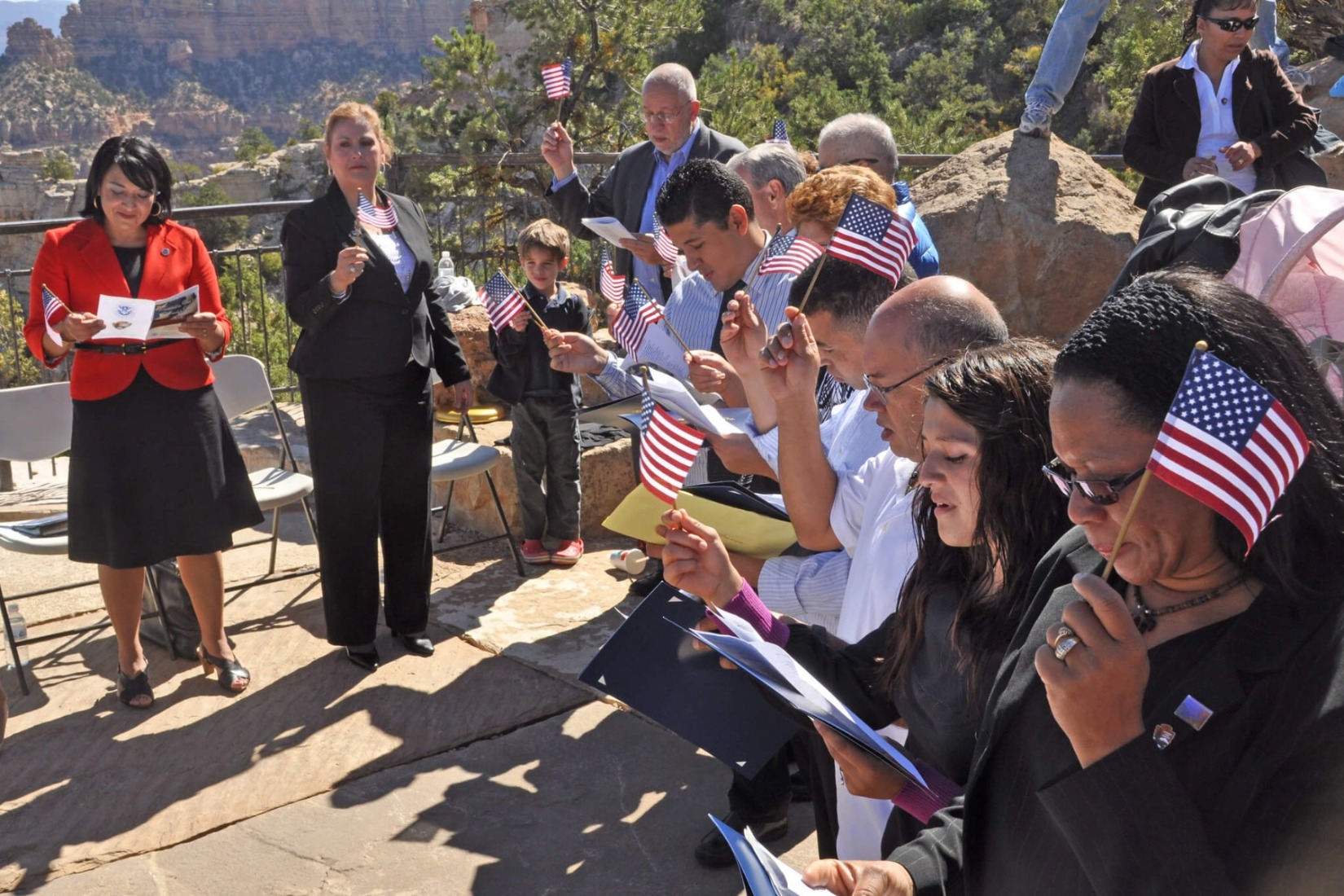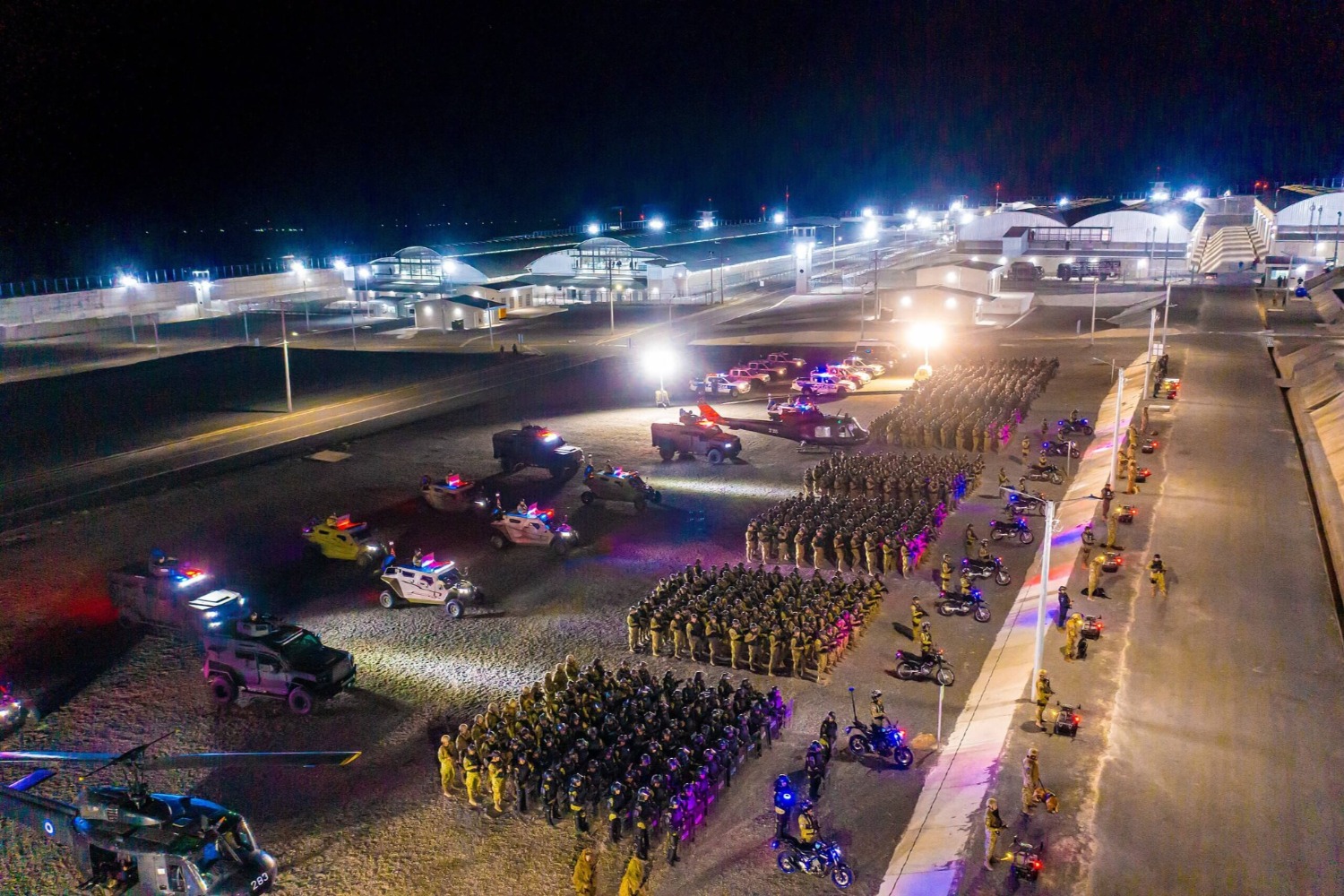There Is No Puzzle About Birthright Citizenship
Barnett and Wurman invoke a nonexistent “puzzle” about the law of nations to justify their theory about birthright citizenship.

Published by The Lawfare Institute
in Cooperation With

It has been a month since President Donald Trump issued an executive order purporting to restrict birthright citizenship under the 14th Amendment, which immediately faced legal pushback. Indeed, numerous judges have rejected the president’s executive order and prevented him from implementing it. In a recent New York Times guest essay and blog post, however, Randy Barnett and Ilan Wurman argue that a “puzzle” of the law of nations (what we would today call international law) supports the president’s move to restrict birthright citizenship.
Many others have refuted, in great depth, Barnett and Wurman’s theory that birthright citizenship is conditional upon allegiance to the sovereign. This novel theory, Barnett and Wurman argue, is required because of a “puzzle” regarding how the law of nations gives meaning to a portion of the 14th Amendment.
However, put simply, there is no puzzle.
The 14th Amendment provides that:
“All persons born or naturalized in the United States, and subject to the jurisdiction thereof, are citizens of the United States and of the State wherein they reside”
What does it mean for an individual to be “subject to the jurisdiction” of the United States? The prevailing understanding is that it requires an individual to be subject to U.S. power. Barnett and Wurman accept three categories of individuals commonly understood to be outside this power—foreign diplomats, Native Americans subject to tribal authority before the Indian Citizenship Act of 1924, and members of invading armies. But they are puzzled by the relationship of two additional groups of individuals to a territorial sovereign. First, they cannot reconcile why children of loyal U.S. citizens born on territory occupied by an enemy are “subject to the jurisdiction” of the United States. And second, they cannot understand why children born of foreigners on foreign-flagged vessels in U.S. waters are not “subject to the jurisdiction” of the United States.
In fact, as Ilya Somin has rightly noted, these categories are all perfectly consistent as a matter of generally accepted international law. At the time of the amendment’s drafting and adoption, one state did not, through military occupation, have sovereign power over the civilians of an enemy occupied territory. And a littoral state—a state with coastline or land bordering water—did not have complete sovereign power over the individuals in a foreign flagged vessel, even when that vessel transited territorial waters. Together, these were all circumstances of circumscribed power that render Barnett and Wurman’s puzzle nonexistent.
First, consider military occupation. In 1758, noted international law commentator Emer de Vattel wrote that a state that conquers another has only those rights “derived from justifiable self-defence.” These rights might include, for example, extracting compensation for the cost of conducting the war. And they might include incorporating territory into the lands of the conquering state. But this transfer of territorial sovereignty, importantly, was understood to be subsequent to military occupation. We see this distinction between occupation and transfer of territorial sovereignty in the Lieber Code, a codification of the laws of war promulgated in 1863 by President Lincoln’s War Department. Article 32, for example, stipulated that although an occupying army may administer the affairs of an occupied country, “[t]he commander of the army must leave it to the ultimate treaty of peace to settle the permanency of this change.” Indeed, Article 6 provided that the civil and penal law of the occupied state “shall continue to take its usual course in the enemy’s places and territories” even when that territory is under military occupation.
The distinction between military occupation and transfer of territorial sovereignty was reflected in an 1853 Supreme Court case, Cross v. Harrison. Here, Justice James Wayne remarked that it was only “after ratification of the treaty [establishing peace and transferring territory after the Mexican-American War], [that] California became a part of the United States.” Indeed, before the peace treaty, the Supreme Court stated that the United States had only “military possession” of California and could only exercise the “belligerent rights of a conqueror.”
We see further evidence that this understanding of military occupation persisted through the era during which the 14th Amendment was debated and enacted. In 1874, the Brussels Declaration stated that “the occupying State shall be regarded only as administrator and usufructuary” of assets owned by the enemy state. Although the Brussels Declaration was not adopted as an internationally binding treaty, its substance informed the 1899 Hague Convention on the laws of land war. Article 55, for example, incorporated nearly verbatim the above quote from the Brussels Declaration. Article 45, moreover, provided that “[a]ny pressure on the population of occupied territory to take the oath to the hostile Power is prohibited.” Just 33 years after the 14th Amendment was enacted, the United States was one of the original signatories to the Hague Convention.
Starting far before and continuing long after the 14th Amendment was debated and enacted, the law of nations was clear that military occupation did not displace territorial sovereignty. A child born of a loyal U.S. citizen on American soil is, therefore, no less subject to the jurisdiction of the United States during a military occupation, notwithstanding the administrative prerogatives that the occupying power may exercise under the laws of war.
The second puzzle Barnett and Wurman were unable to solve concerns vessels. Why, they ask, were children born on foreign vessels inside U.S. territorial waters not considered U.S. citizens? Here again, there is a straightforward, concrete, and narrow explanation that has nothing to do with abstract notions of allegiance. Sources from the years before and after the 14th Amendment was enacted show that a littoral state was limited in its ability to coerce a foreign flagged vessel in the littoral state’s territorial waters. Today, this limitation is called the doctrine of innocent passage, which provides that foreign flagged ships may traverse territorial waters so long as the passage does not prejudice “the peace, good order or security of the coastal state.” Throughout the 19th century, the geographic limits of the littoral state’s control over waters adjacent to the coast was in flux. Likewise, the degree to which littoral states could exercise jurisdiction over foreign flagged vessels was also developing. Nevertheless, there were clear indications that the law of the sea did not give littoral states complete jurisdiction over foreign flagged vessels in territorial waters.
As early as 1812, in Schooner Exchange v. McFaddon, the Supreme Court held that a “public armed ship, in the service of a foreign sovereign, with whom the government of the United States is at peace” was understood to be in U.S. territory under “an implied promise” and thereby “exempt from the jurisdiction of the country” provided that it did not take any hostile act. In 1875, just seven years after the 14th Amendment was enacted, Secretary of State Hamilton Fish wrote that a foreign flagged vessel could be boarded within the territorial waters of the United States only if that vessel was bound for a “port of the United States.” To do otherwise would, in the secretary’s words, “trespass ... upon the rights of [the vessel’s] flag under the law of nations.” This understanding of the limits of state power in territorial waters was also evident in international practice outside the United States. Article 2 of the 1882 North Sea Fisheries Convention, for example, recognized “the freedom of navigation and anchorage in territorial waters accorded to fishing boats, provided they conform to the special police regulations enacted by the Powers to whom the shore belongs.”
Jurisdiction over a vessel did not automatically transfer to a littoral state once that vessel entered territorial waters. It is true that the precise degree of flag state control over a vessel in the territorial waters of another state was subject to some debate throughout the 19th century. Nevertheless, this distinction between littoral state jurisdiction over territorial waters and over a foreign flagged vessel in territorial waters undoubtedly prevailed throughout this period. It is perfectly consistent with the other categories of individuals excepted from the jurisdiction of the United States, then, that a child born of foreign parents on a foreign flagged vessel, even in territorial waters, did not enjoy birthright citizenship under the 14th Amendment.
* * *
Barnett and Wurman rest their theory of the 14th Amendment on a legal conundrum that did not exist at the time the amendment was debated and enacted. Occupied military territory and the territorial sea were understood to be zones of limited jurisdiction for the occupying power and littoral state, respectively. In this way, they are consistent with the other ways in which the jurisdiction of the United States is understood to be limited (interpretations with which, again, Barnett and Wurman have no issue). The conundrum certainly does not exist today, either under the law of war or under the UN Convention on the Law of the Sea. If they are serious that this conditional theory of birthright citizenship is necessary only because of an inscrutable puzzle about the bounds of state jurisdiction under international law, it is a debate for naught.





